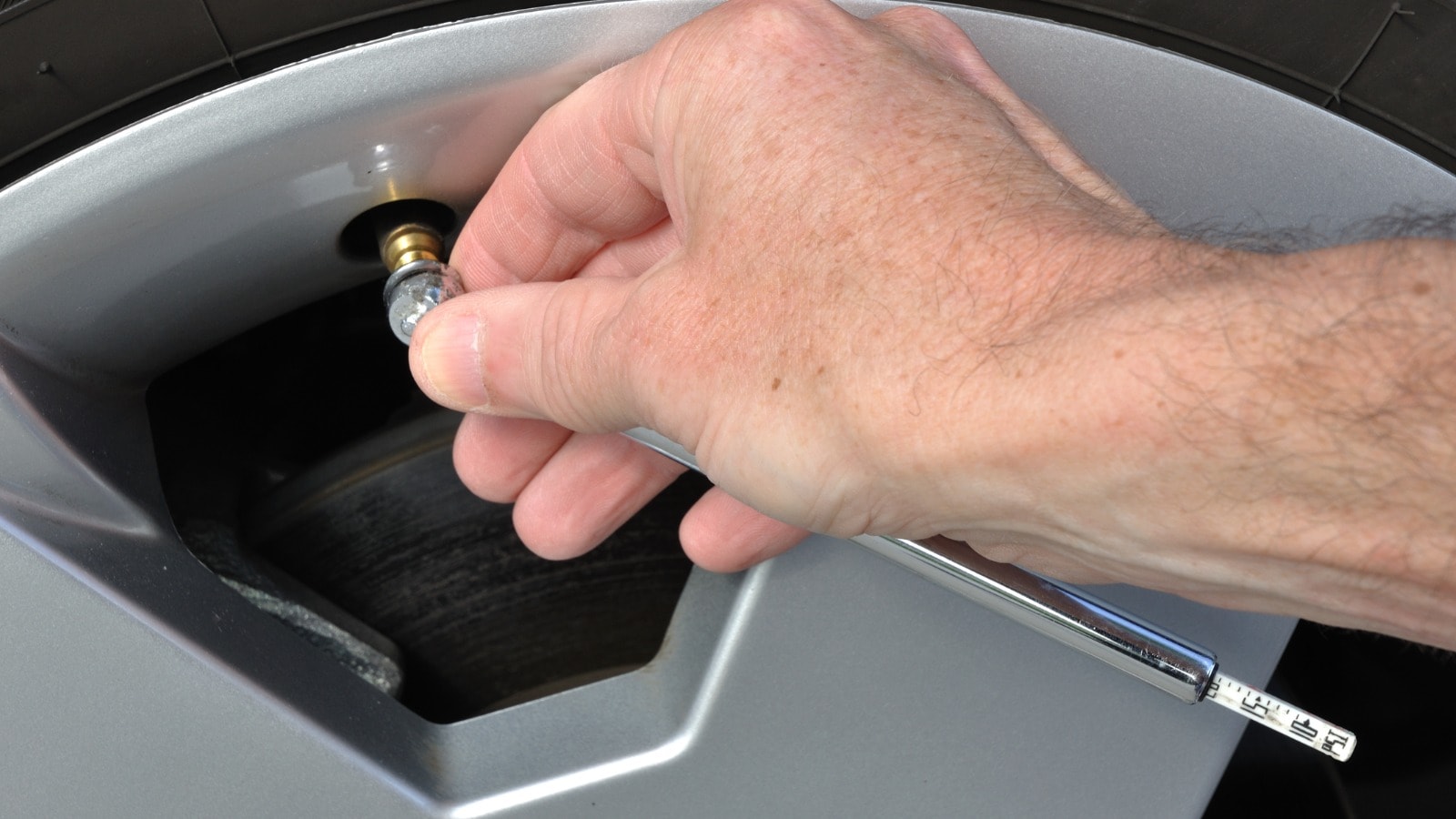Your car’s tire pressure monitoring system (TPMS) is probably right most of the time. But it can wait to flag a problem, according to a new study. So AAA says, “Drivers should still check their tire pressure manually” about once a month.
About the Study
Analysts from AAA tested 11 vehicles from model years 2022-2024, with sedans, SUVs, and pickup trucks in their sample. They found the average percentage difference between what TPMS shows and what a freshly calibrated manual tire gauge finds was 1.2% to 1.5%. A difference that small is virtually irrelevant to safe handling.
Related – Car Tires Guide: Everything You Need to Know
But TPMS tended not to alert drivers to a problem until it had grown fairly significant. The organization notes, “The amber warning TPMS light illuminated when tires were underinflated to 75% of the posted pressure (located on the sticker inside the door jam) for five of 11 test vehicles. Five of the six remaining test vehicles illuminated the TPMS warning dashboard light when tires were deflated to 70.3 to 72.9% of posted pressure,” AAA says.
That’s a significant enough difference to make a car handle sluggishly in emergency maneuvers and might keep you from steering successfully around an obstacle.
Verify Regularly — Especially in the Cold
So, the agency recommends drivers use a manual gauge about once a month to check for problems the TPMS might not have warned about yet.
Related: TPMS Sensor Replacement Costs
Many of us may have low tire pressure right now. This time of year, much of the country is due for its first cold temperatures. Cold will cause the air in a resting tire to grow denser, which lowers pressure even in a healthy tire.








